13 September
After a day of rest in Cañas, Costa Rica and some time down on the farm where life is kinda laid back, Fr. Miguel, Ignacio, Eduardo, and Leo were ready for another day of walking. And this promised to be a long one…
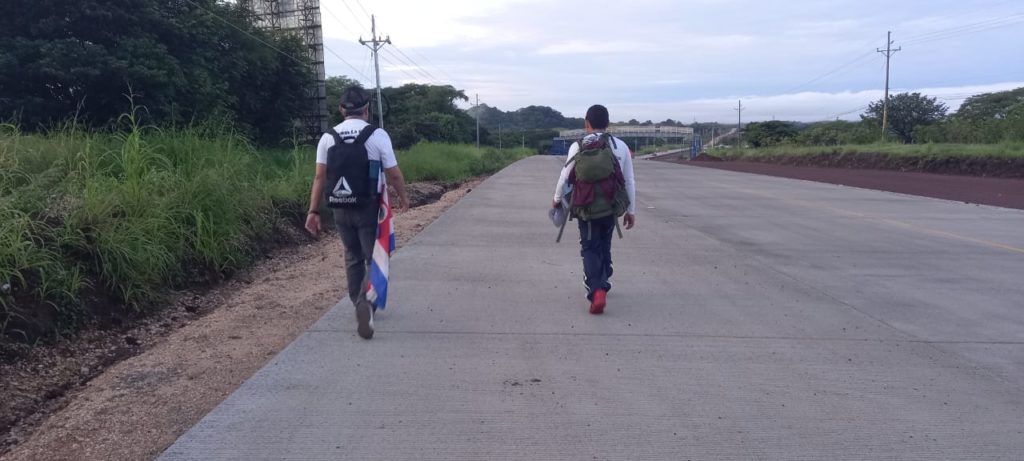
Today the team was scheduled to walk from Cañas to Abangares, a distance of 34 kilometers or about 21 miles.
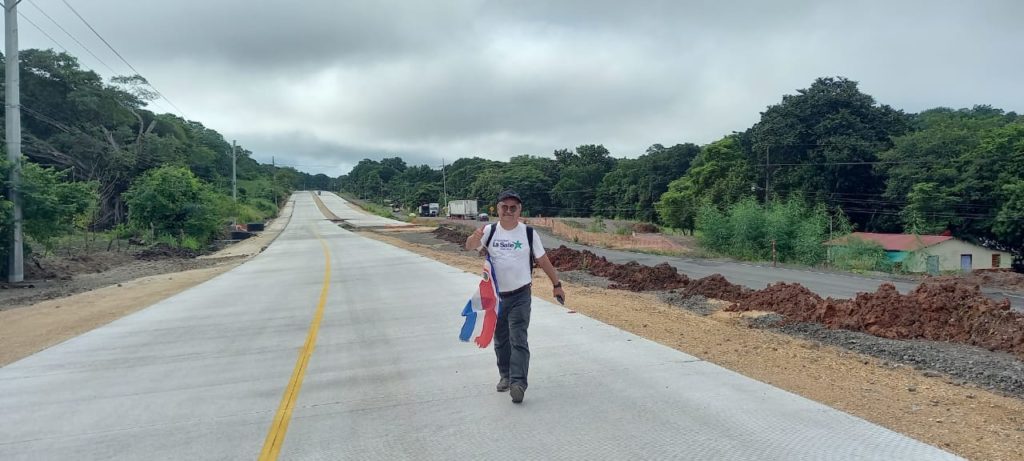
It’s great to have Leo along, the team’s new companion for the Camino Tico, the portion of the route that goes through Costa Rica.
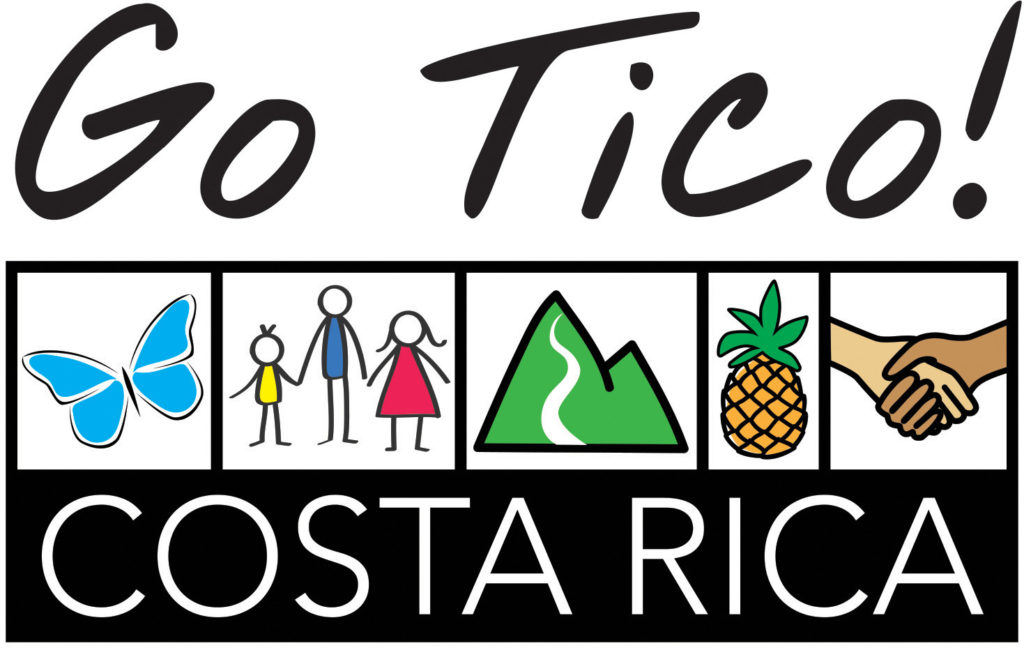
“Tico” is a term Costa Ricans use to refer to themselves. The term comes from a unique linguistic habit favored in Costa Rica. In Spanish, the suffix “-ito” or “-ita” attached to a word is a diminutive, indicating that the item referenced is small. Costa Ricans tend to substitute “-tico” or “-tica” instead, or even use it in combination with “-ito” or “-ita”. For instance, in Spanish, “un poco” means “a little”. “Un poquito” would mean “a very little bit”. But Costa Ricans would commonly say “un poquitico” to mean the same thing. Other Spanish speakers can use “-tico” in a similar way, but what is unique to Costa Rica is that the use of this suffix also denotes affection. For instance, instead of calling a little girl “chica”, you might call her “chicitica”. If you are in need of a cup of coffee in the morning, you might ask for a “cafetico”. The family dog might be called the “perrotico”. And so on… Costa Ricans feel that their nickname is a reflection of their warm and affectionate nature. A charming custom, don’t you agree?
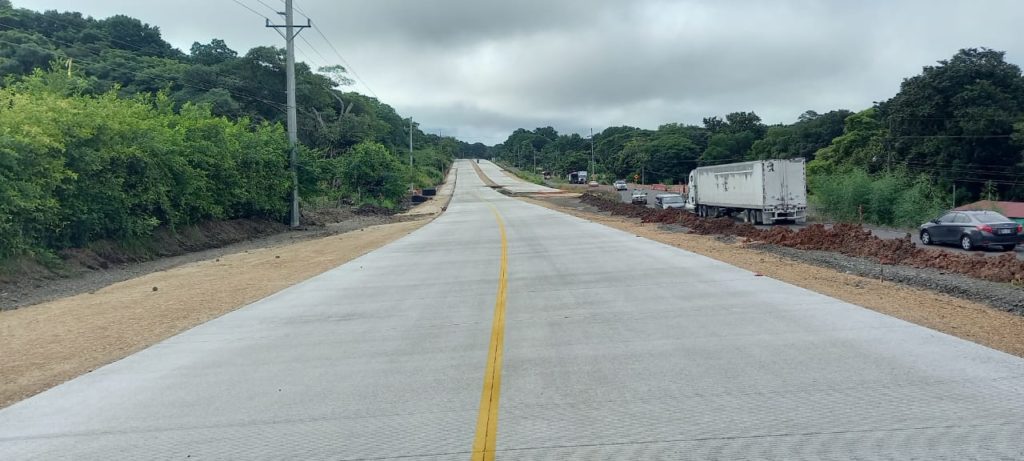
There was a lot of road construction along today’s route. This newly built road was not yet open to vehicle traffic.
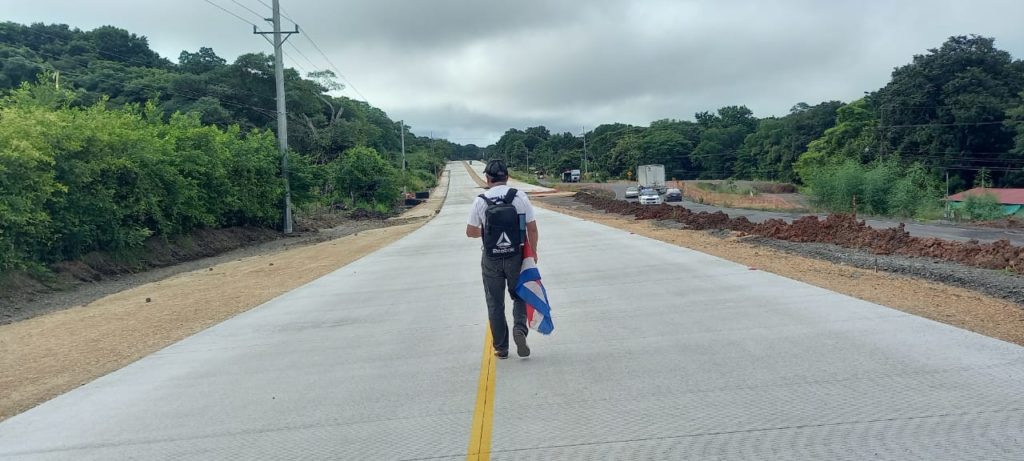
But foot traffic was another matter! Sometimes, when people are on pilgrimage, they carry a flag of their country of origin or sew a patch of their flag to their backpack. This serves a dual purpose. It lets others know that this individual is on a pilgrimage, and it also proclaims an individual’s nationality. Leo is from San José and is carrying the flag of Costa Rica.
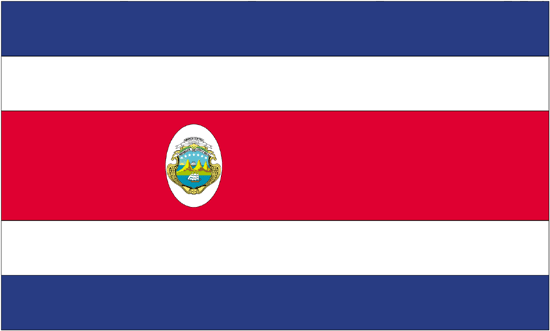
Since 1848, Costa Rica’s flag has had five stripes of red, white, and blue. The blue represents the sky and Costa Rican values of opportunity, idealism, and perseverance. The white is reminiscent of peace, wisdom, and happiness. And the red stands for the blood spilt by those who have sacrificed their lives in defense of the country, as well as the warmth and generosity of Costa Rica’s people.
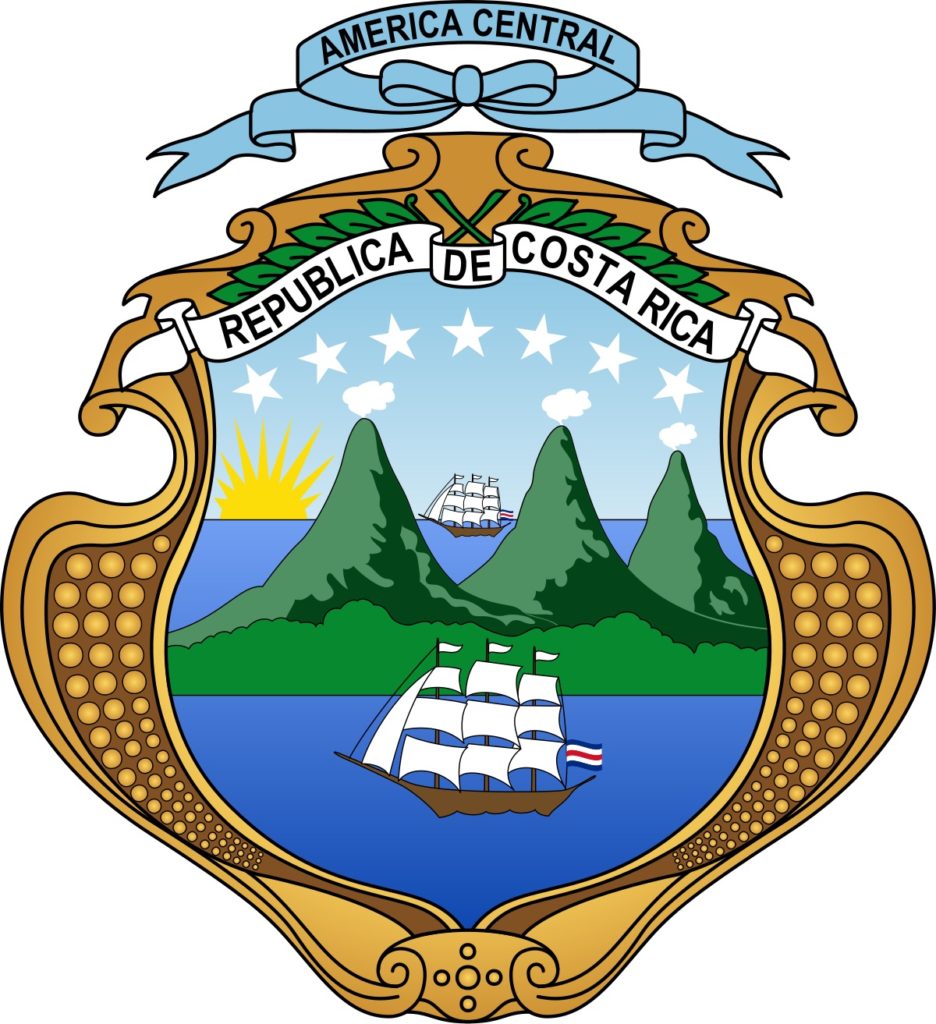
When the flag is used by the government, it includes the coat of arms of Costa Rica. Otherwise, the coat of arms is omitted. It depicts the isthmus between the Pacific Ocean to the country’s west and the Caribbean Sea to the east along with three of the volcanoes for which Costa Rica is known. The seven stars are for the seven provinces of Costa Rica. The Spanish name of the country, “Republica de Costa Rica” is on a white banner, with “America Central” appearing on a blue banner to recall the former United Provinces of Central America, of which Costa Rica was a part, together with Guatemala, El Salvador, Honduras, and Nicaragua (1823-1840).
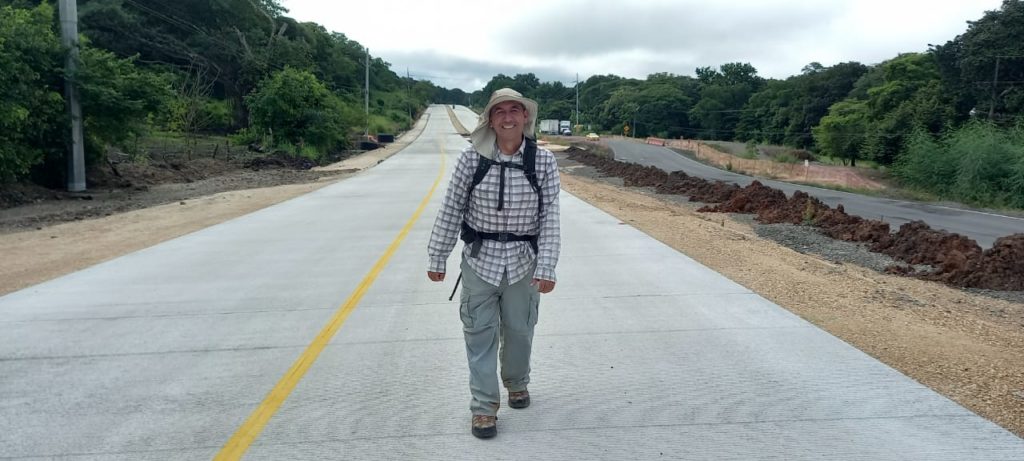
In the early days of the Camino, Fr. Miguel carried a Guatemalan flag. We haven’t seen his flag in a while. Hmmm…. ?
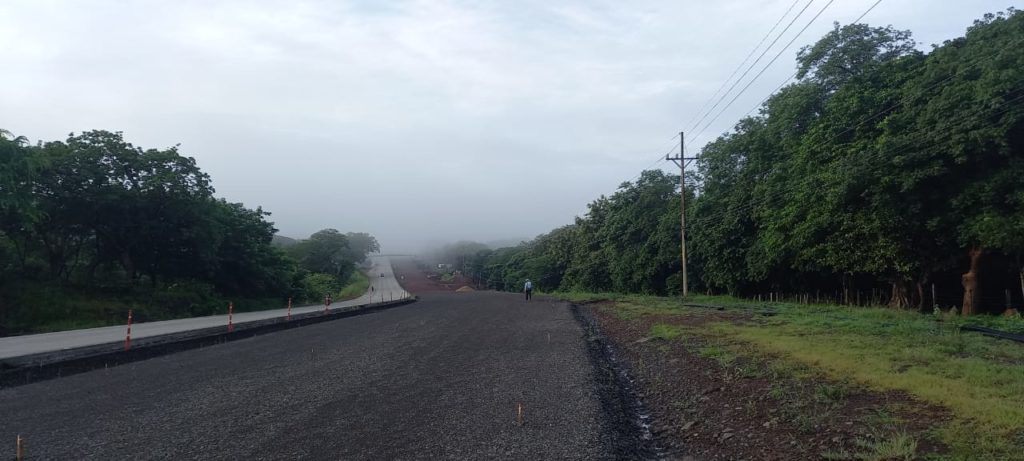
Today was a much more comfortable day for walking. It hasn’t been as hot lately, with high temperatures in the low to mid 80s. Today was even a bit cooler because of the cloud cover. That’s a huge relief after the oppressive heat the team endured on earlier portions of the Camino!
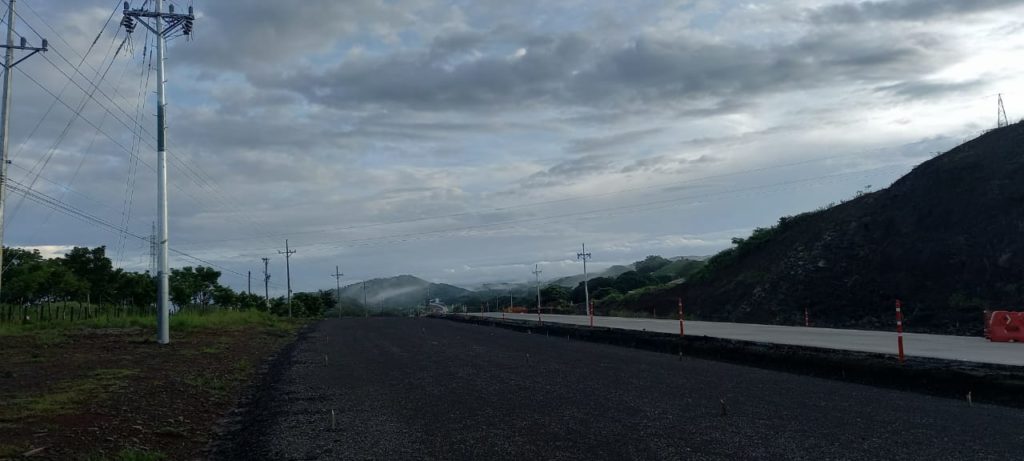
Although there are some hills in western Costa Rica, the highways level things out a bit and mean that the road is relatively flat. This obviously makes for a much easier walk! Whew!
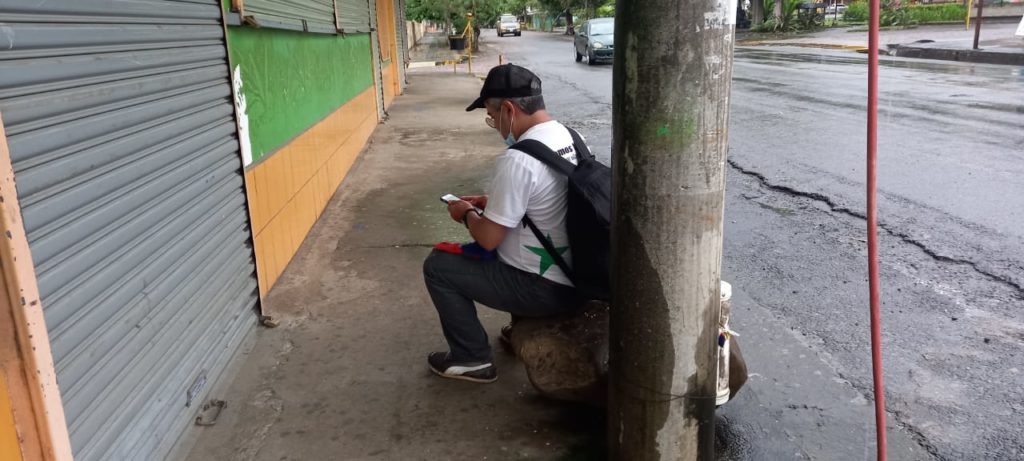
Western Costa Rica is largely rural, so internet service is often not available. The team takes the opportunity to check email and answer texts whenever they have a good signal.
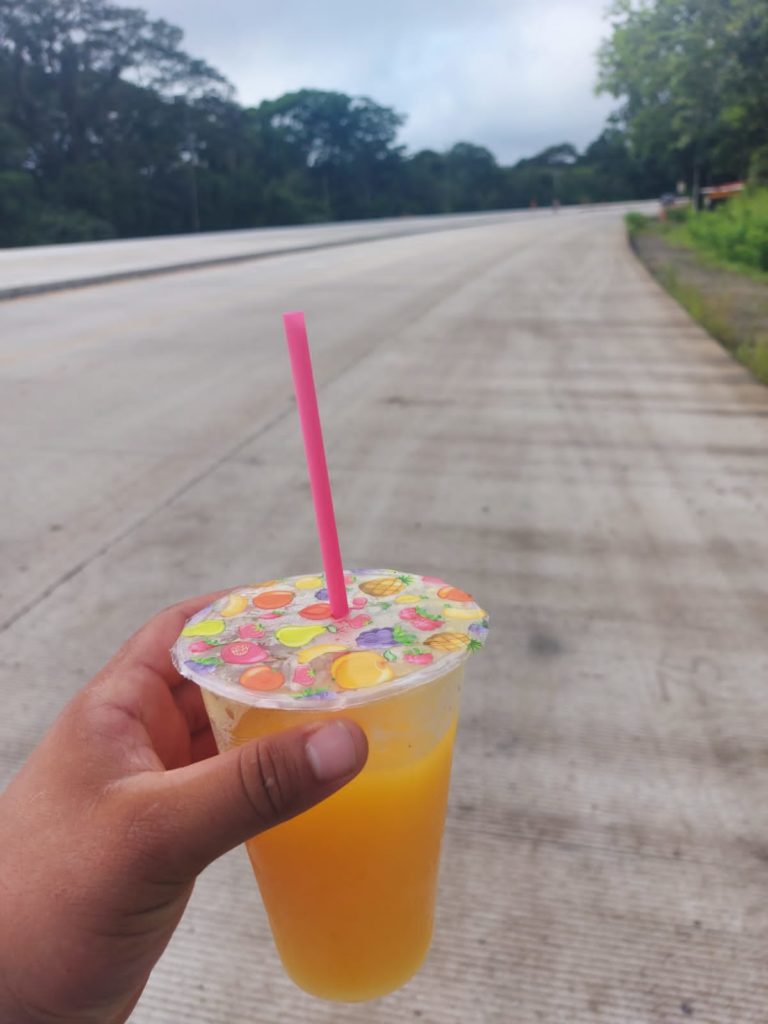
They also grab opportunities for a little local refreshment when the chance presents itself. Eduardo enjoyed this natural orange juice from a stand along the road.
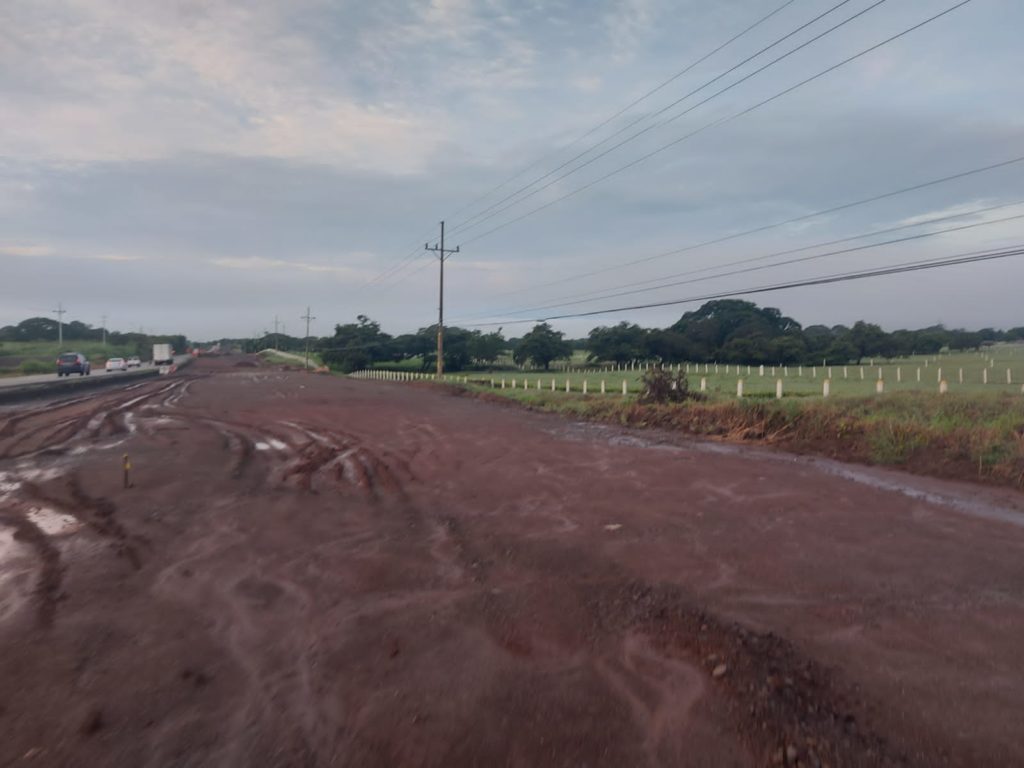
Today there was LOTS of road construction!
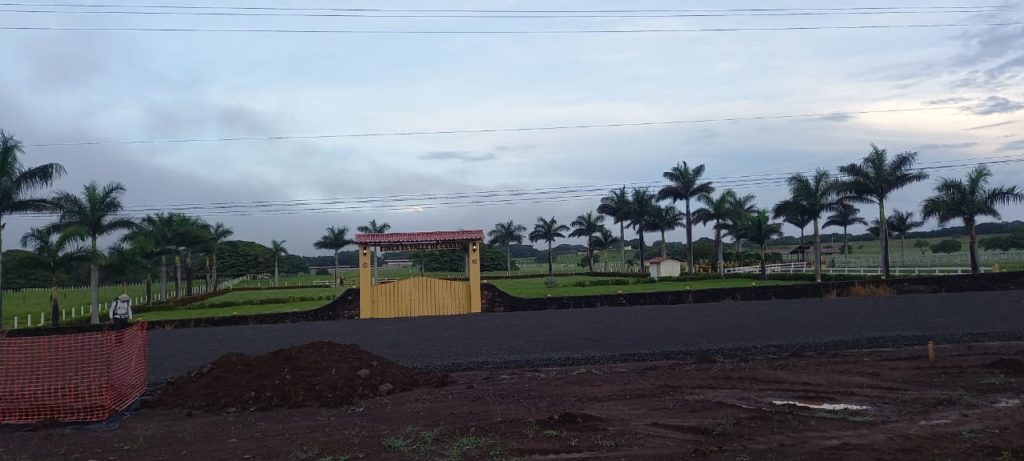
Some of the road work included the construction of a new bridge.
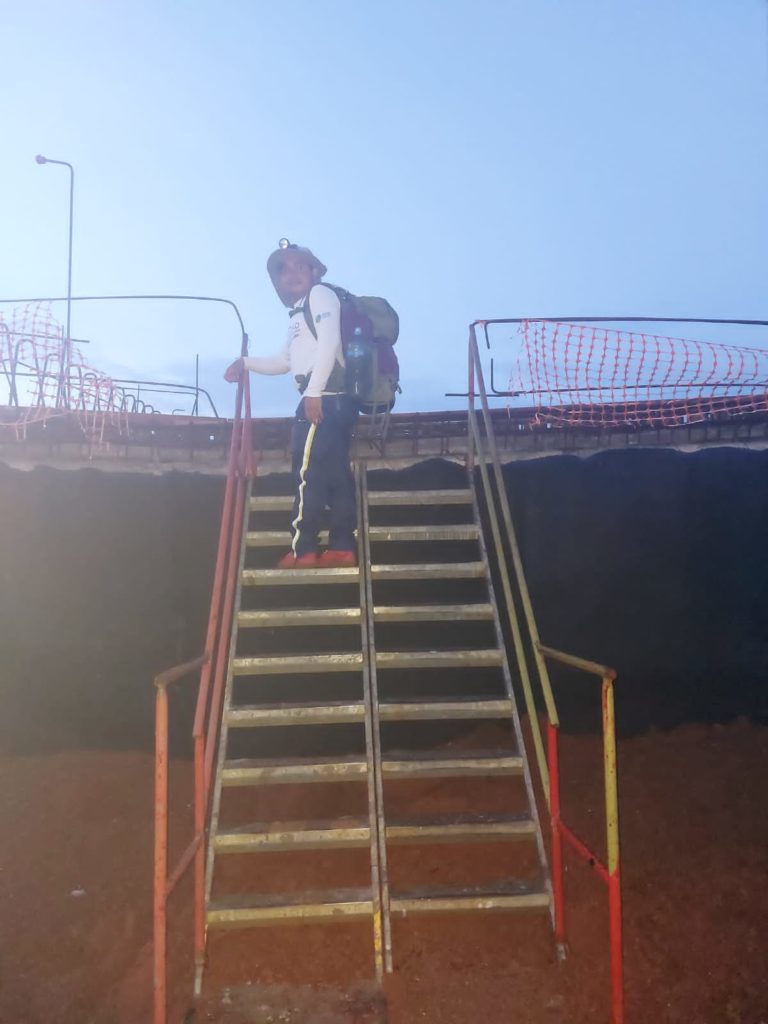
Ignacio’s curiosity got the better of him. He had to check out how it was done!
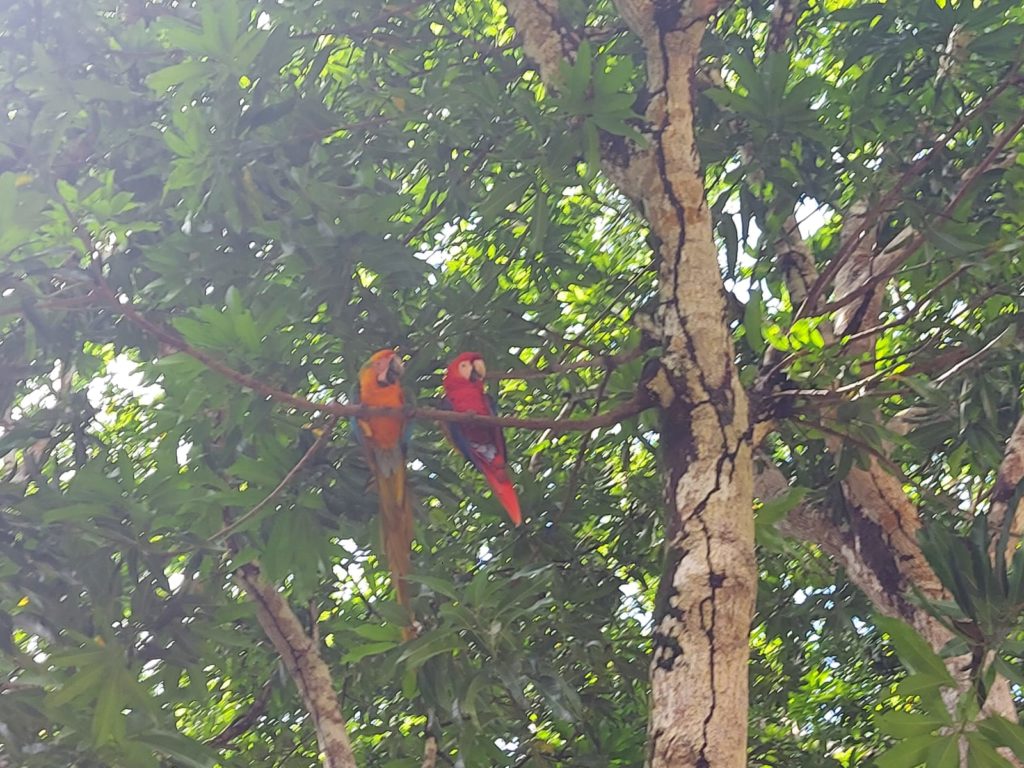
There were some curious watchers in the trees in some of the more wooded areas. Fr. Miguel was lucky to get such a great picture of these brilliant birds!
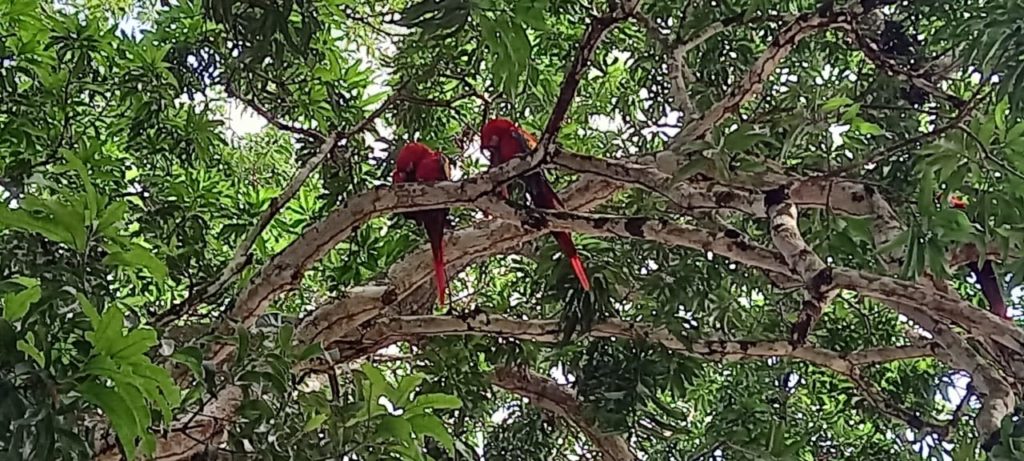
There are 17 parrot species in Costa Rica. They are one of the few families of birds that can imitate the human voice. Most species of parrot can live for over 100 years. These scarlet macaws are members of the largest parrot species in the world, averaging 33” in length. Although they are endangered, they are fairly common in western Costa Rica. Scarlet macaws mate for life, so if you spot one in the wild, its mate is probably close by.
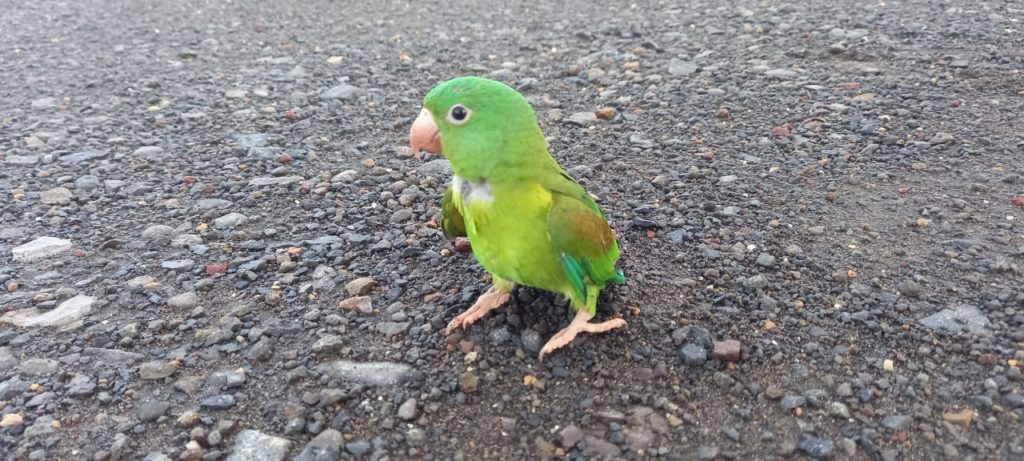
Orange chinned parakeets are a smaller species of parrot native to Central America. They average about 7” in length. These birds are quite common, even along busy highways and in urban areas. Although they nest in tree holes, they come out into more open country in search of food.
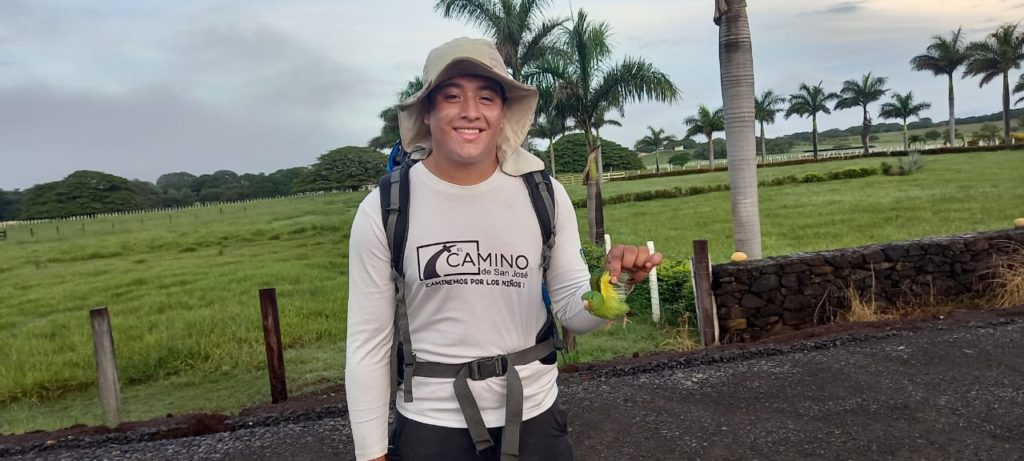
Usually, these birds are seen in groups. To find one alone, like this one, is an indication that it might be injured. Eduardo was very careful rescuing this parakeet. After moving it off the highway, he let it go.
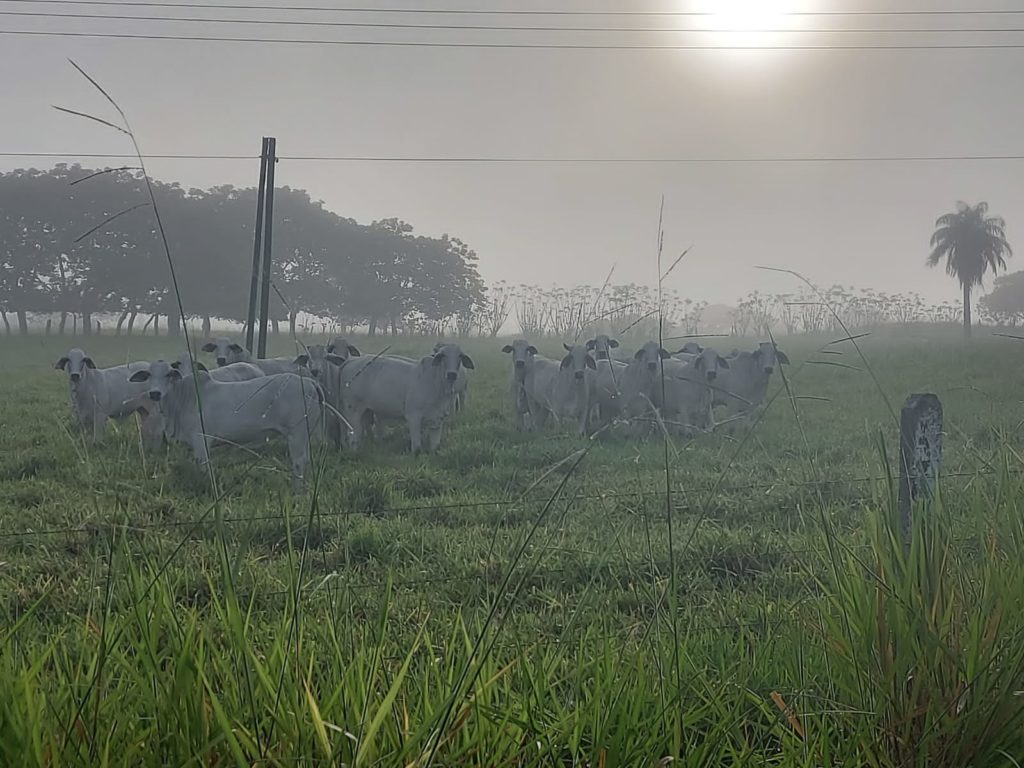
Cattle ranches are a common sight in this part of Costa Rica, even along busy highways.
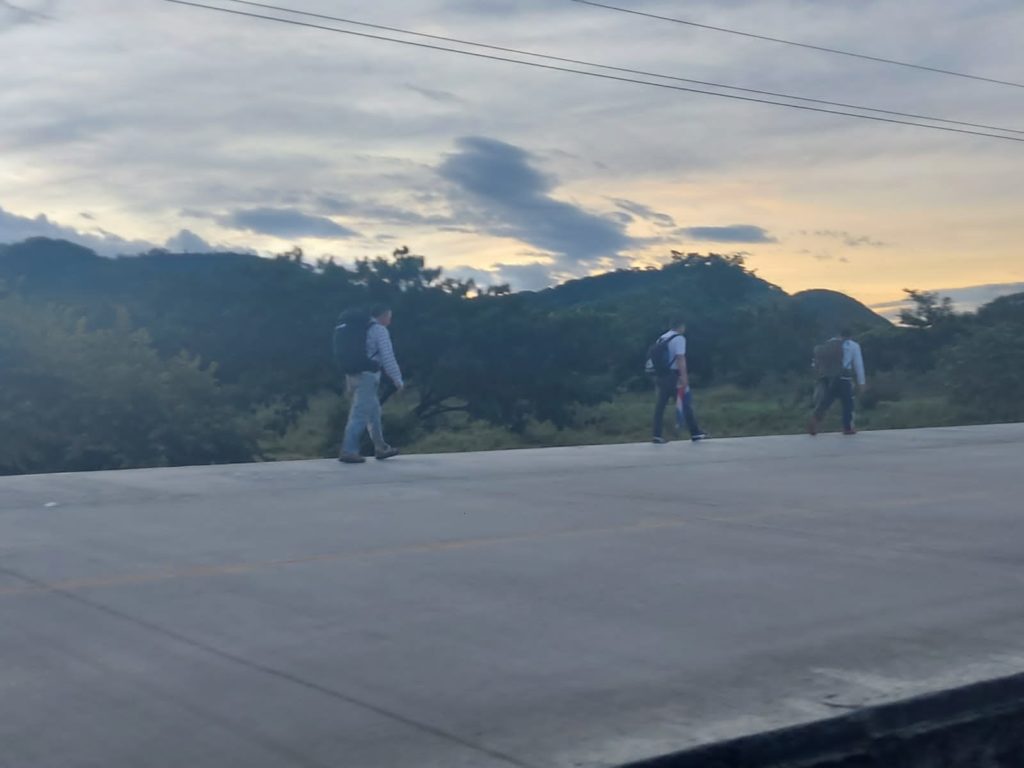
There really wasn’t much to see as the day wore on…
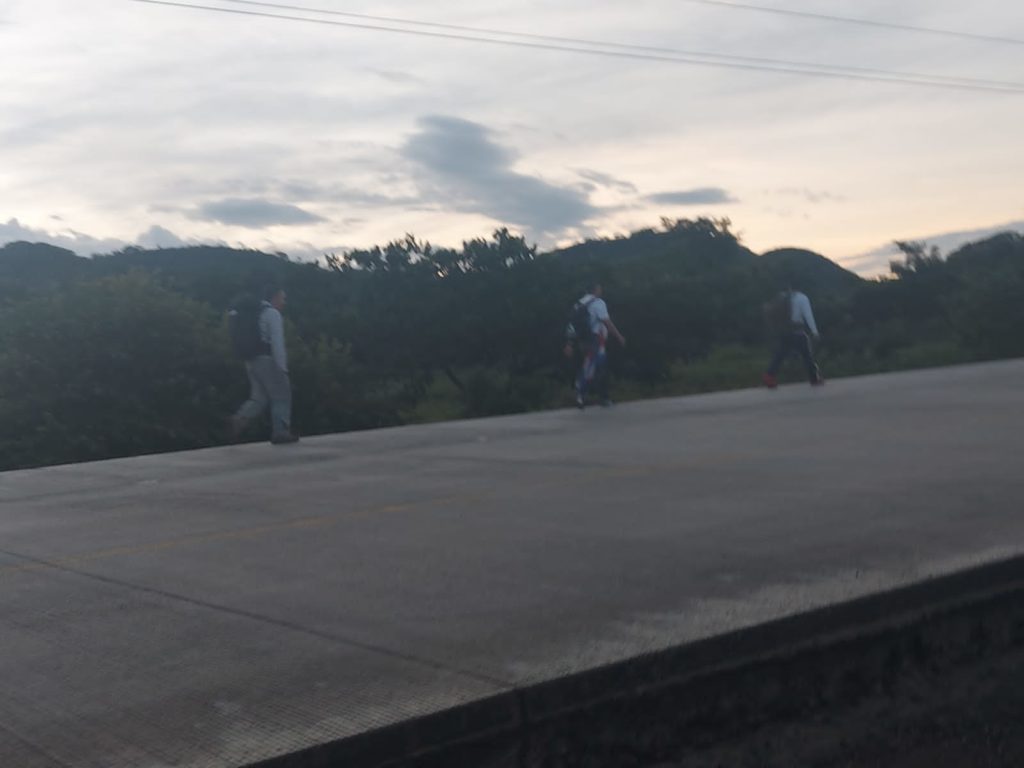
…and on…and on…
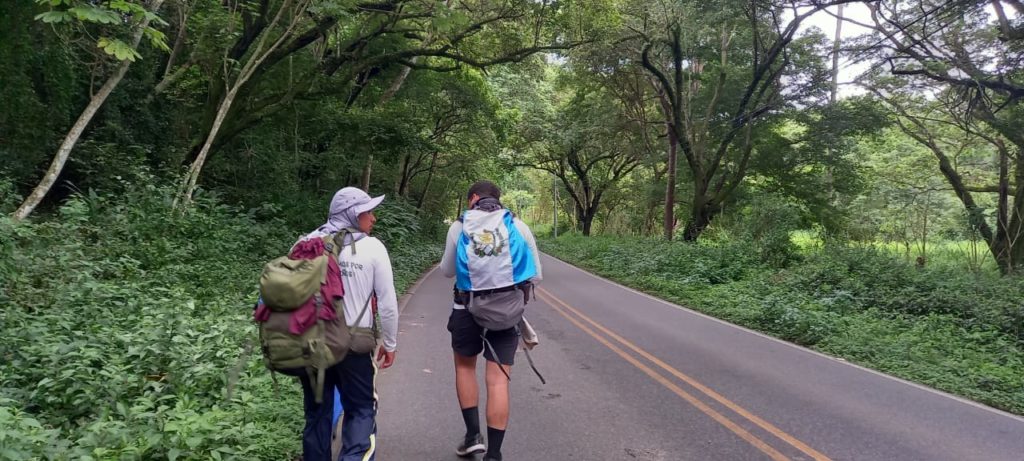
The wooded areas were beautiful. This looks just like a country road in central Kentucky, where I live.
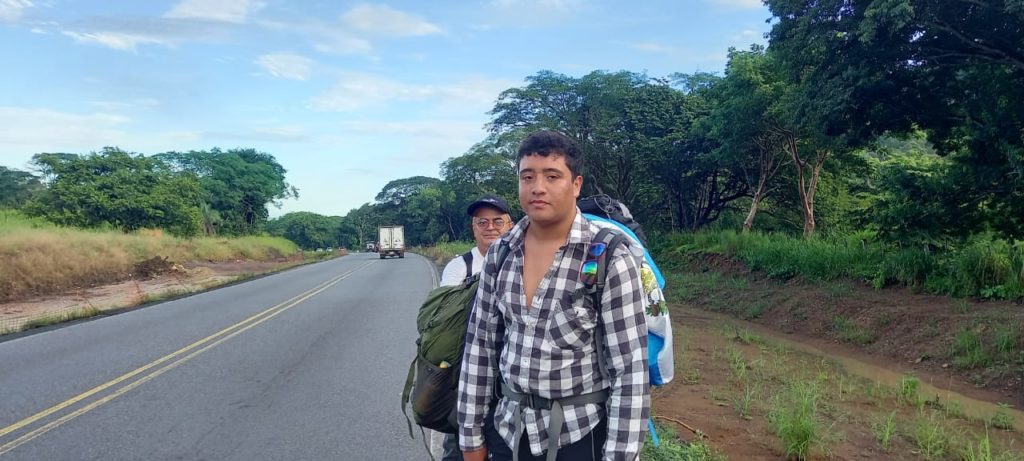
By the time the team was getting close to the end of the route, Eduardo had just about had enough.
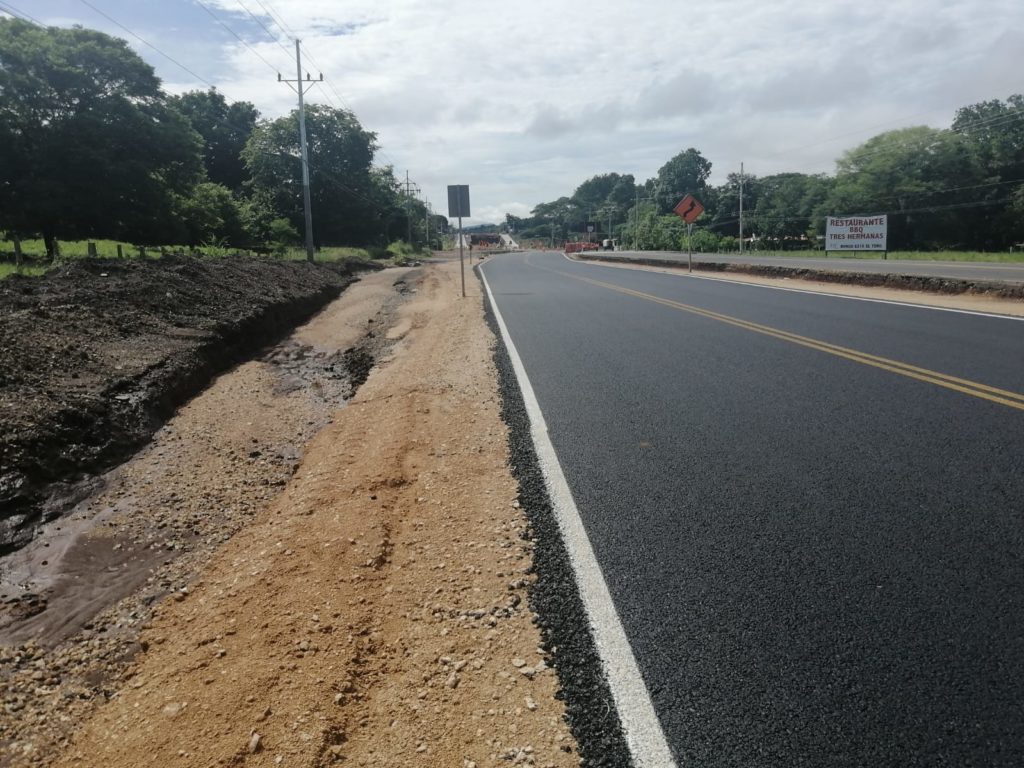
When the team saw the sign for Tres Hermanas, they knew they were getting close to their destination, Abangares.
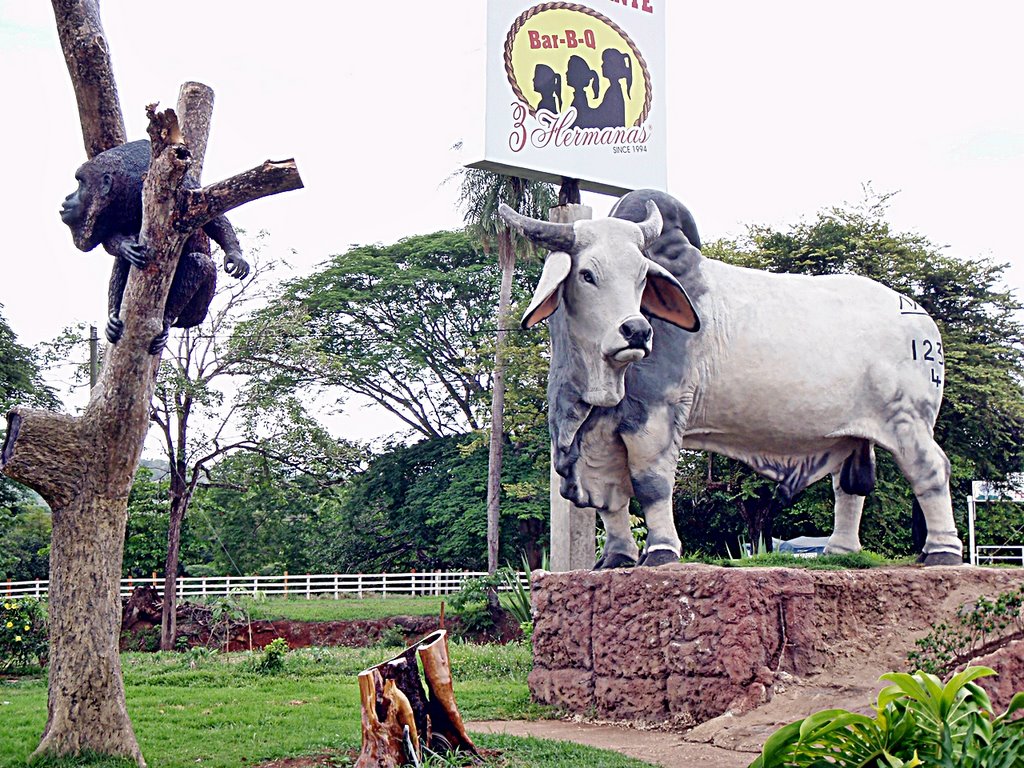
Tres Hermanas Bar-B-Q is a popular place for travelers to stop along the Pan-American Highway. Reviews indicate that Tres Hermanas has delicious, reasonably priced barbecue. And clean restrooms…always a valuable commodity.
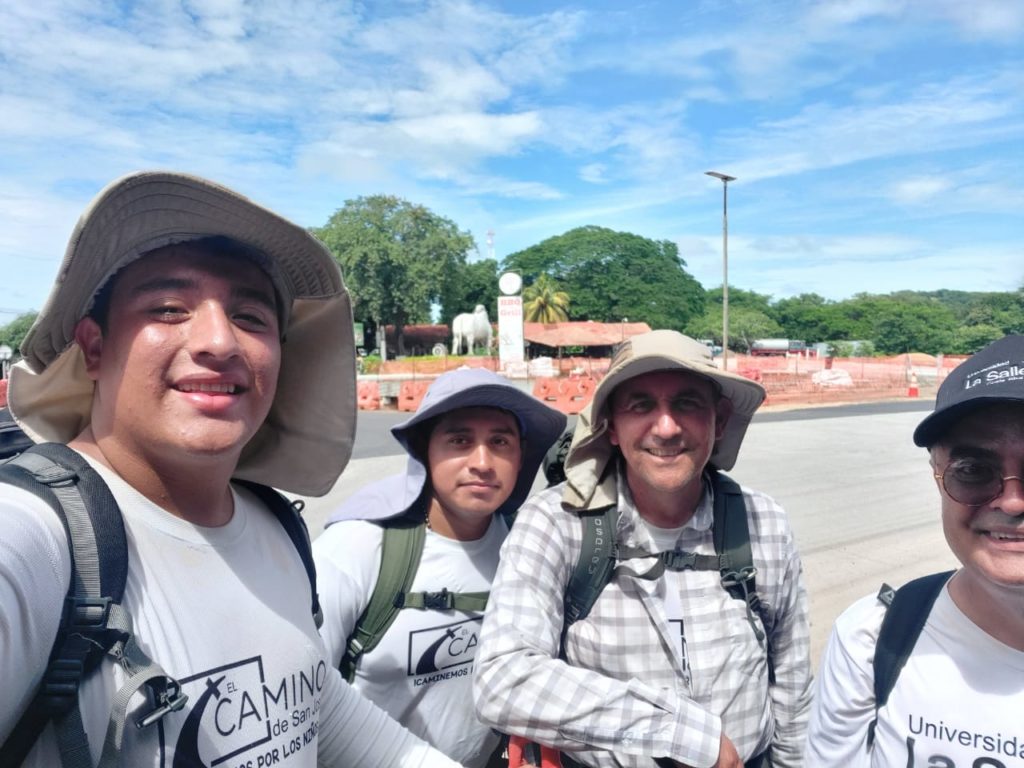
I don’t think the team ate at Tres Hermanas, but it still provided a great photo op!
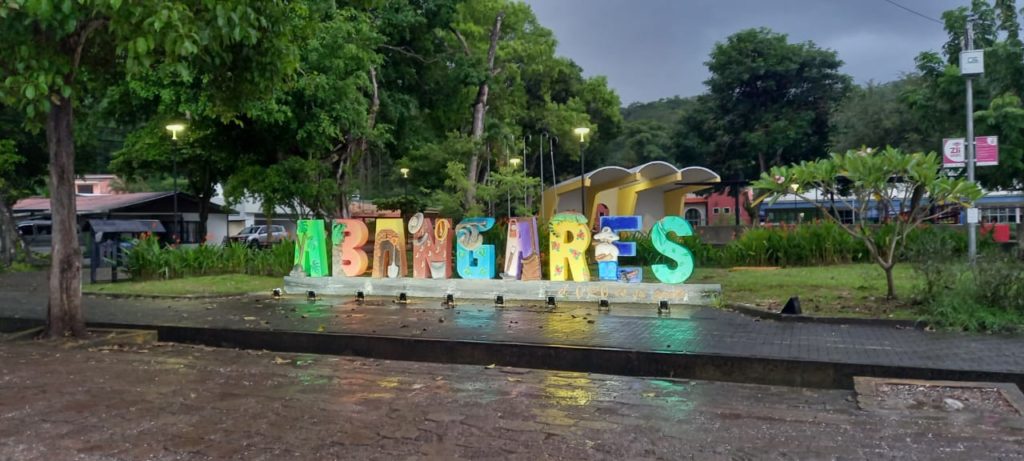
Afternoon found the travelers arriving in Abangares, Costa Rica. The name of the town was derived from “Avancari”, the name of a powerful chief of a tribe that once inhabited the area. It was believed that the strength and flow of the nearby Rio Abangares was controlled by this chief whose name meant “god of the waters”.
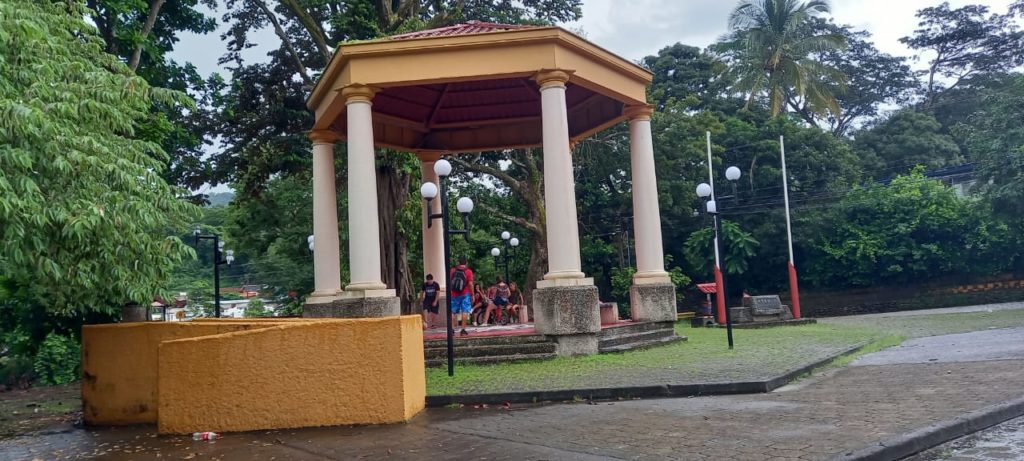
Like in most towns throughout Central America, there’s a central park with a bandstand.
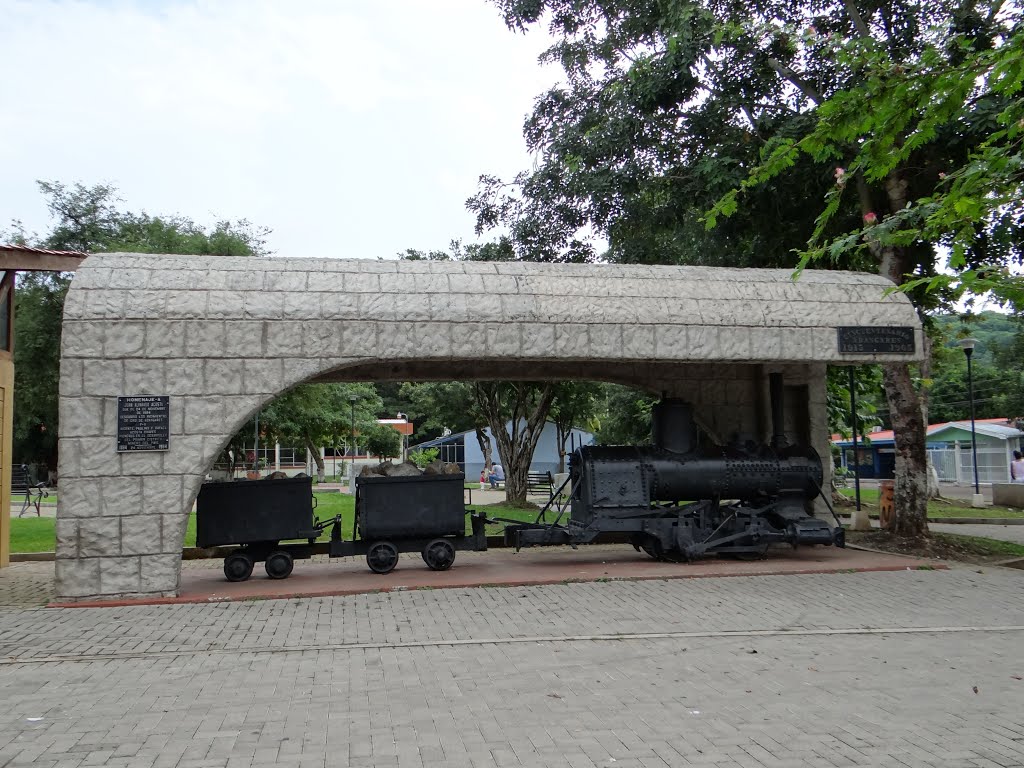
In the central park of Abangares is an old locomotive. It was nicknamed Tulita in honor of the wife of the administrator of the mines in 1904.
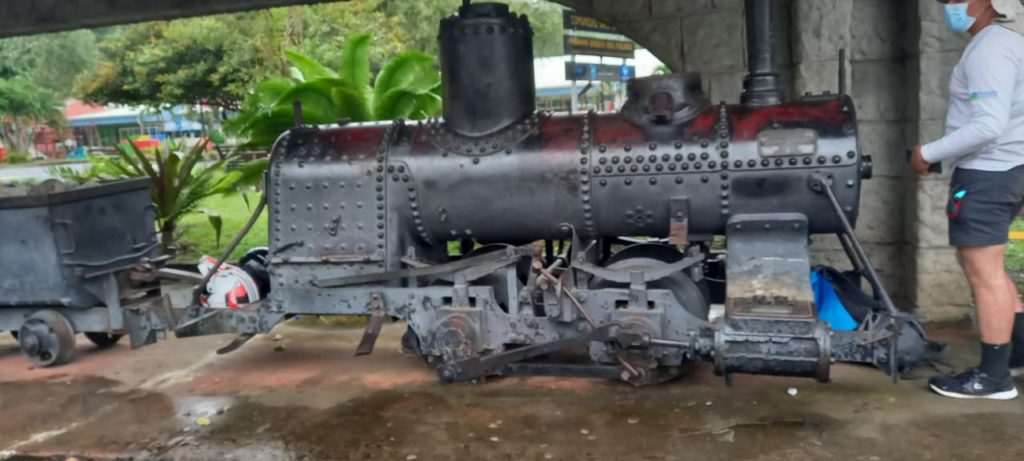
Abangares is a mine town. Tulita was a part of the first train system for the mines, brought from England over 115 years ago.
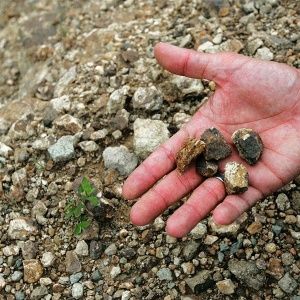
Gold was discovered in the region of Abangares in 1884. For a time, the mine was owned by three brothers and was called Tres Hermanos. (Remember Tres Hermanas Bar-B-Q out on the highway?) In 1889, the mine was sold and was renamed the Abangares Gold Fields.
Soon more mines were opened throughout the region. Many techniques were employed to raise the productivity of the mines. These included the use of cyanide and mercury to extract gold from the ore and pulverization of gold-bearing material.
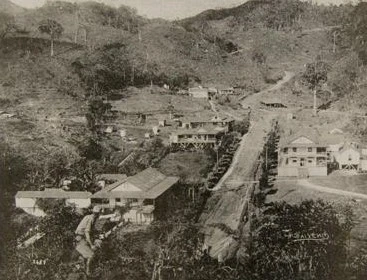
By 1901, a community had developed around the mines. There was a commissary, a hospital, shops, a hotel, workshops, an ice factory, a telegraph office, and an electrical substation.
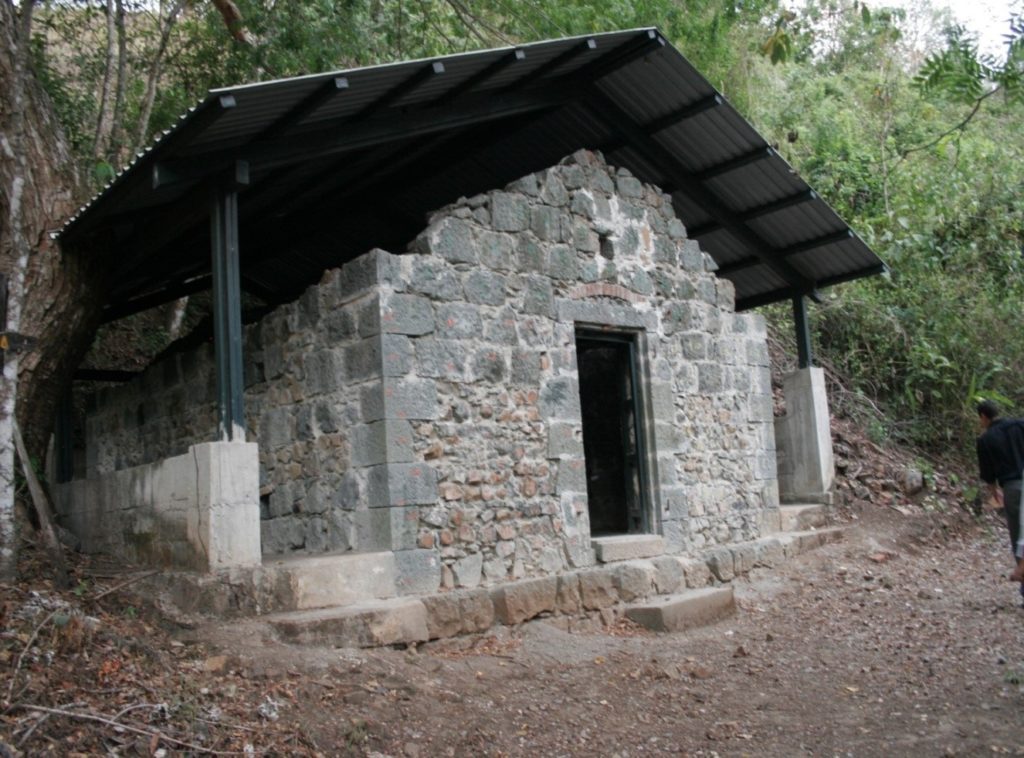
Italian stonecutters were employed to build up the town, including the foundations of the Los Mazos Building where gold was processed.
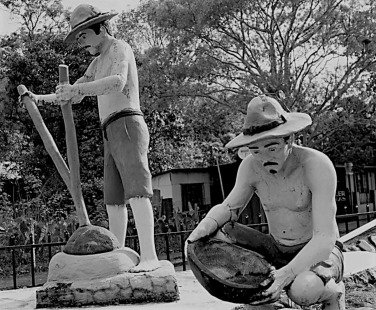
Many migrants came to the area to work in the mines from such far flung places as Jamaica, China, Germany, England, and North America.
The Abangares Gold Fields ceased operations in 1931, in part due to exhaustion of the gold deposits in the mines. One of the last mines in the area closed its doors in 2001, still owing its employees two months worth of wages.
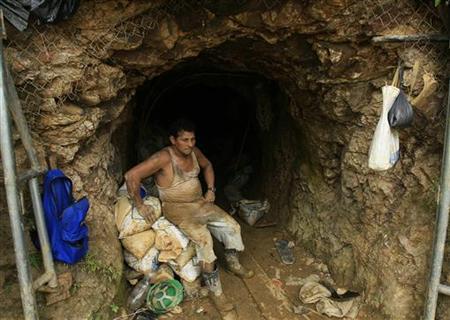
Some gold mining continues to be done in the area, with silver as a by-product. A local collective continues to operate some of the mines, which provides a meager living for about 300 families.
In 1991, the Abangares Mines Ecomuseum was opened where the old gold processing plant once stood. Many buildings and pieces of machinery that were in use during the boom times of the Tica gold rush were rescued and are now on display in the museum. There are also indoor displays of photographs and smaller mining objects such as crucibles, carburetors, and pulleys.
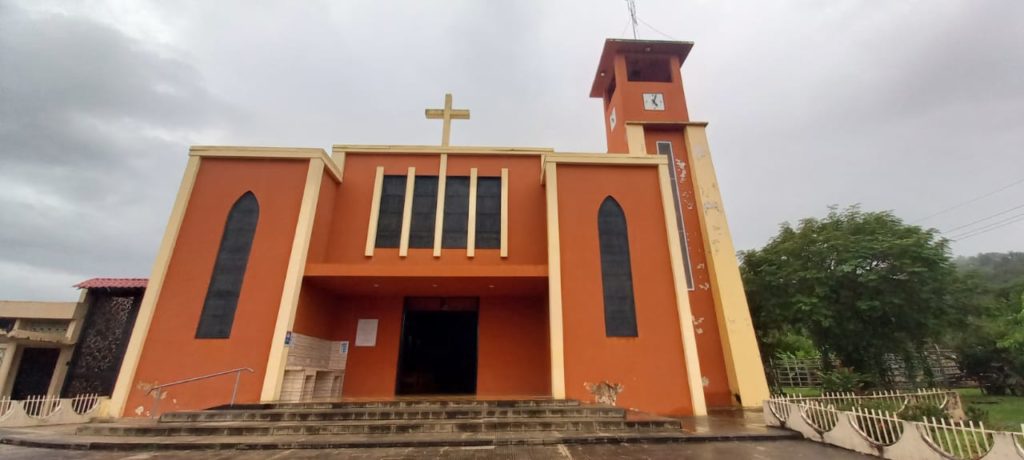
Lodgings for the night were at la Parroquia San Jorge Martir in Abangares.
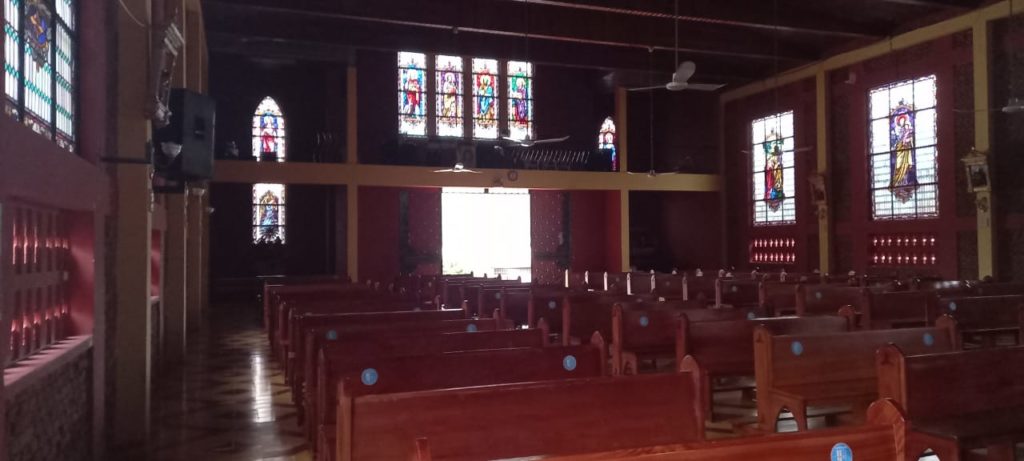
The stained glass windows depicting a variety of saints are a particularly beautiful aspect of this church.
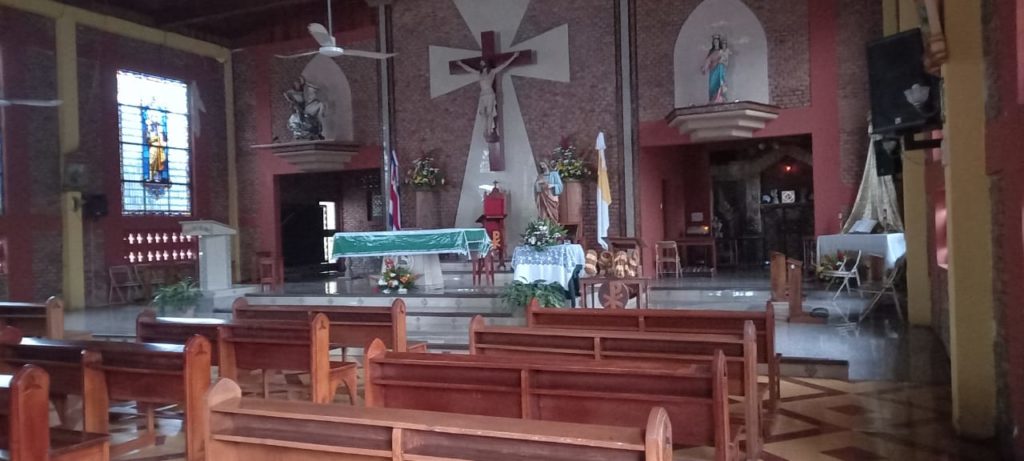
The church is named in honor of Saint George, who is believed to have been martyred under the Roman Emperor Diocletian in 303 AD. He was venerated as a model of valor and selflessness during the Middle Ages, especially in England.
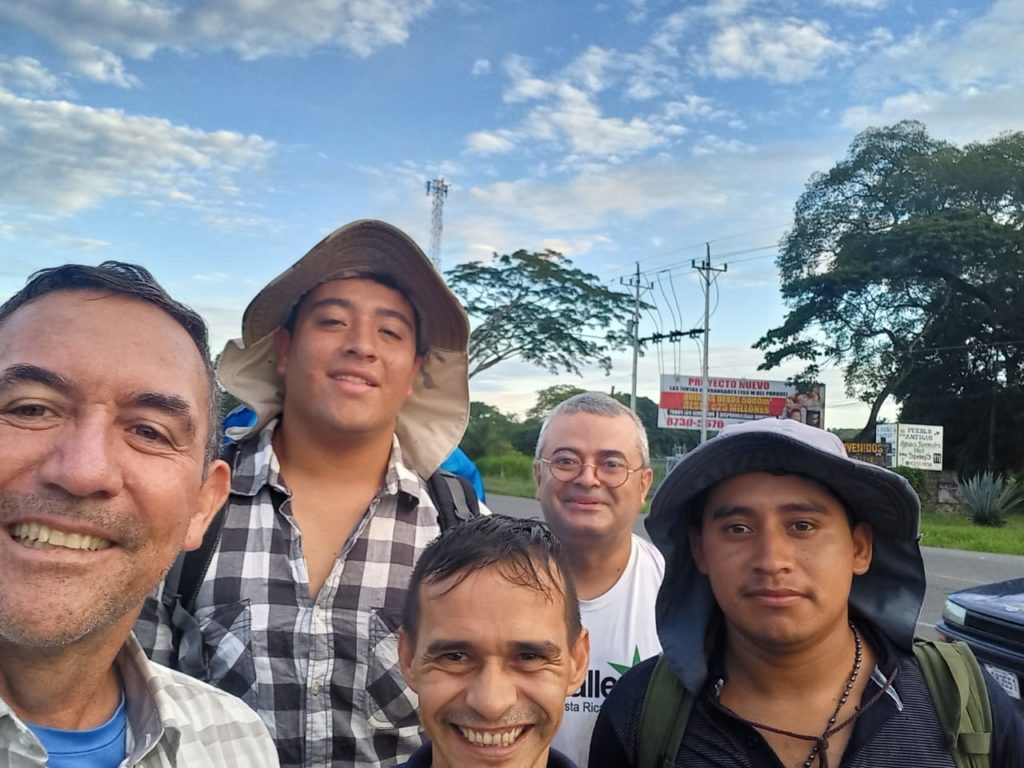
The team is very grateful for Fr. Rodolfo, who treated them with such kindness and offered such warm hospitality at his home, the rectory of Saint George Martyr Parish in Abangares.
We’re almost at the end of the journey. From Abangares, the team only has about a week left on the road. We hope you’re enjoying coming along virtually, and that you’ll stick with us to the end. If you think any of your friends would enjoy the adventure as well, please tell them about what Fr. Miguel is doing and point them toward our website. The children and families of The Little Mountain School would be very grateful!
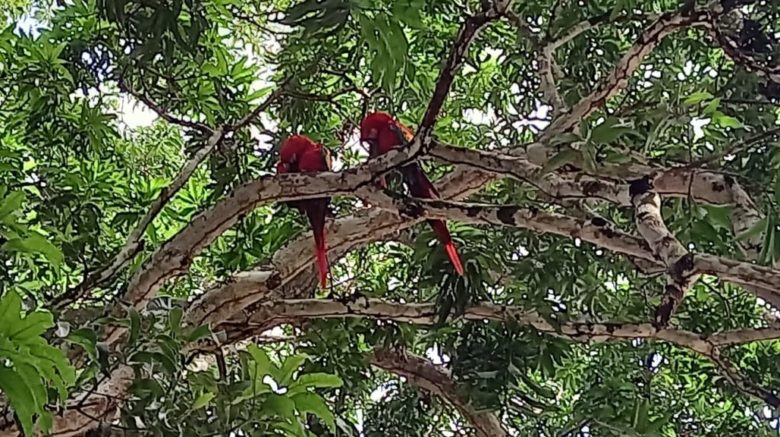

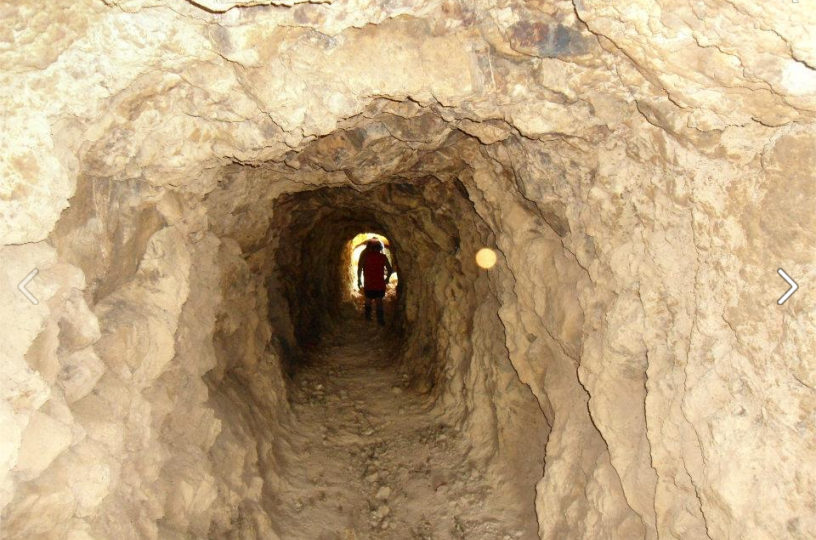
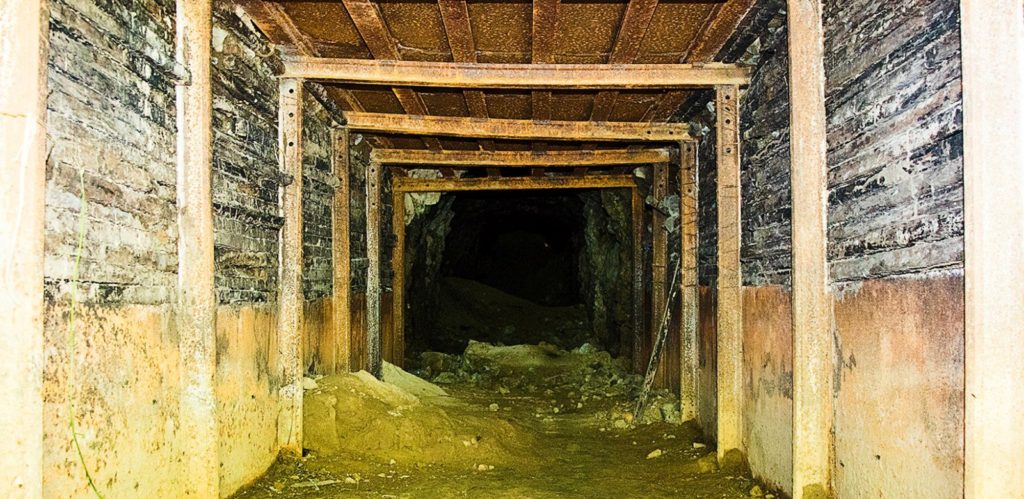

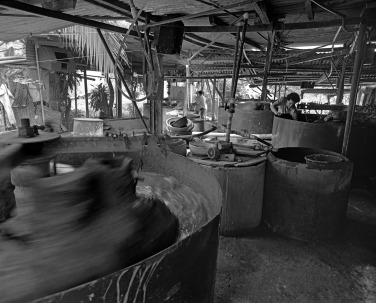
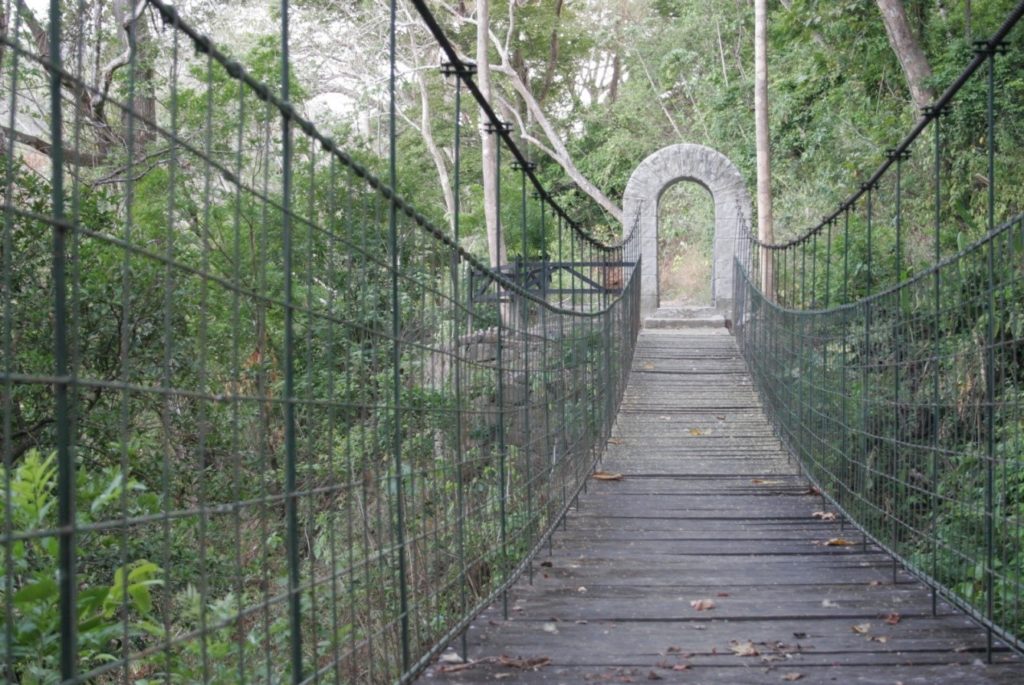
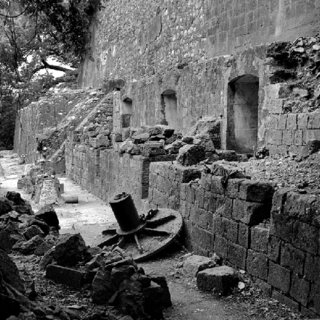
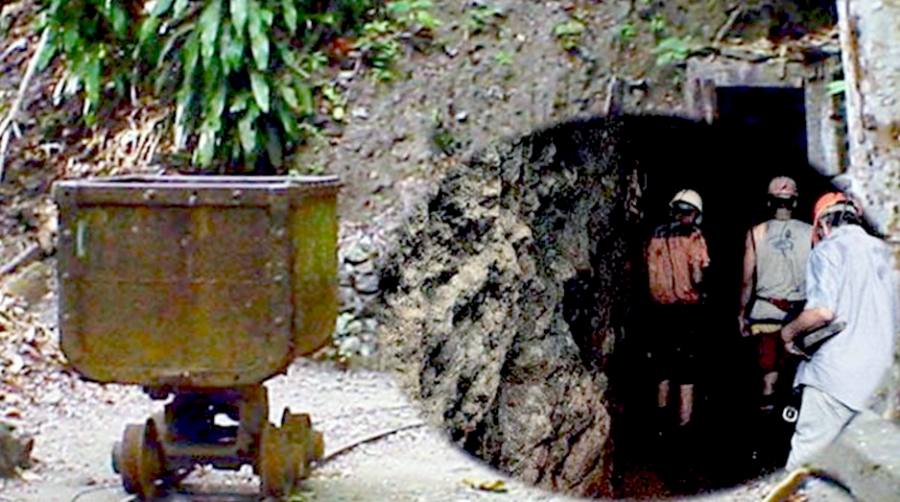
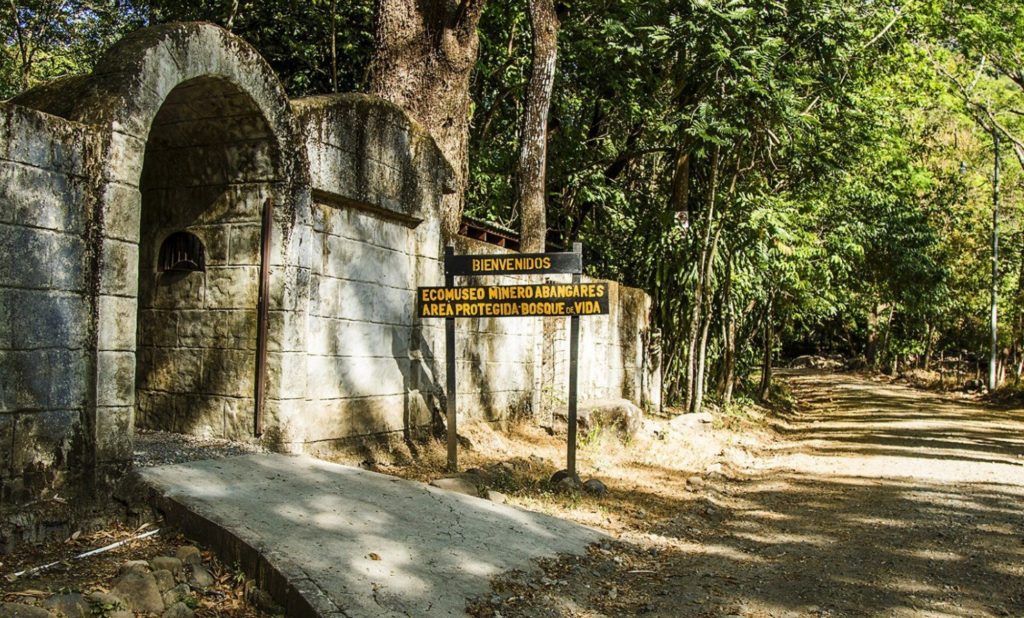
Wonderful pics and great commentary. Blessings on the continuing journey.